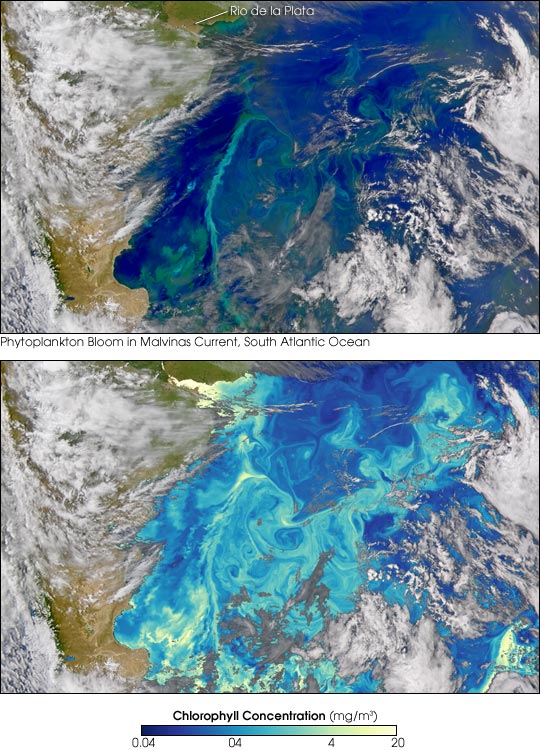


Off the Atlantic coast of the southern tip of South America, a jet of cold water branches off the Antarctic Circumpolar Current, which loops in a continuous eastward-flowing cycle in the Southern Ocean around Antarctica. This north-flowing offshoot is called the Malvinas Current or the Falkland Current (because it passes by the Falkland Islands). The Malvinas Current flows northward along the coast of South America until it meets the warm, south-flowing Brazil current, usually within a few degrees north or south of the latitude of the Rio de la Plata, where the Paraná and Uruguay Rivers meet the Atlantic.
This pair of images shows the Malvinas Current area of the South Atlantic in two different perspectives on December 6, 2004, based on data from the Sea-viewing Wide Field-of-view Sensor (SeaWiFS). The top image is natural color, similar to a digital photograph, and shows colorful blooms of marine plant life in blue and green. The bottom image shows chlorophyll concentrations in shades of blue (lower concentrations) to yellow (higher).
The convergence of the Malvinas and Brazil currents causes temperature and salt concentrations to vary a great deal within a relatively small area. The flowing and jostling of the ocean waters creates pockets of sinking water and upwelling water. Upwelling draws nutrient-rich water from lower layers of the ocean up to the surface where microscopic ocean plants--phytoplankton--live. The influx of nutrients is a watery fertilizer, and phytoplankton concentrations increase. The chlorophyll and other light-catching pigments make the colorful patterns on the ocean surface.
Provided by the SeaWiFS Project, NASA/Goddard Space Flight Center, and ORBIMAGE